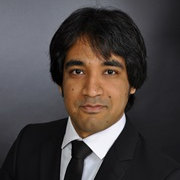Weathering of Mine Wastes: Process, Characterization and Modeling
A special issue of Minerals (ISSN 2075-163X). This special issue belongs to the section "Environmental Mineralogy and Biogeochemistry".
Deadline for manuscript submissions: closed (29 February 2024) | Viewed by 2768
Special Issue Editors
Interests: reactive transport; acid mine drainage; electrostatic interactions; low-permeability media
Interests: hydrogeology; stochastic modeling; vadose zone; remote sensing; climate change
Interests: reactive transport modelling; multiphysics; acid mine drainage; uranium in situ recovery; radioactive waste; cementitious materials; geochemistry
Special Issue Information
Dear Colleagues,
Mineral exploitation may date back to more than 100,000 years ago. Socio-economically useful minerals generally represent a minor proportion (up to a few % in weight or volume) of the overall polygenic hosting rock blocks that need to be excavated to reach and process the valuable minerals. Given the virtually negligible net present value of the surrounding (“gangue”) minerals, it has been the rule since the cradle of mining activities to create mine waste.
The proper management of mine waste presents critical challenges for mine operators, governments, and citizens. The socio-economic impacts of mine weathering processes are very persistent, affecting the environment not only during the life cycle of a mine, but also in the post-closure period.
A crucial environmental aspect is related to the (biogeo)chemical weathering of mine waste, which can lead to a polluted drainage. In case of sulfide-rich waste, for instance, such drainage can be enriched in metal(loid)s and acidity. The prediction of the generation and spreading of such polluted drainage, as well as the design of their adequate containment actions, require an in-depth understanding of complex water/gas flow dynamics, transport of aqueous/gaseous solutes, water–rock interactions and mineral dissolution/precipitation, microbial processes, and possible alteration of the reactive waste material due to geochemical processes. This involves the applications of laboratory- and field-based experimental techniques, and models to sufficiently forecast future scenarios in a mine site as well as to analyze the appropriate remediation schemes. However, the utilization of an optimal combination of experimental, modeling, and advanced characterization/monitoring techniques to rigorously study the complex coupled processes in mining environments as well as to make management decisions based on such investigations remains a big challenge.
This Special Issue welcomes high-quality contributions in the broad areas of mining hydrogeology, and geochemistry/mineralogy of mining waste/waste confining structures with emphasis on both fundamental and applied research. The objective is to compile recent developments in the experimental and numerical techniques as well as to document case studies applying different techniques.
The specific topics include, but are not limited to: 1) laboratory/pilot experiments, 2) field investigations, 3) advanced/innovative characterization/numerical methods, 4) application of (bio)geochemical and (single/multi-phase) reactive transport modeling, 5) application of machine learning/artificial intelligence algorithms in mining environments, and 6) influence of meteorological conditions under a changing climate.
Dr. Muhammad Muniruzzaman
Dr. Daniele Pedretti
Dr. Nicolas Seigneur
Dr. Tommi Kauppila
Guest Editors
Manuscript Submission Information
Manuscripts should be submitted online at www.mdpi.com by registering and logging in to this website. Once you are registered, click here to go to the submission form. Manuscripts can be submitted until the deadline. All submissions that pass pre-check are peer-reviewed. Accepted papers will be published continuously in the journal (as soon as accepted) and will be listed together on the special issue website. Research articles, review articles as well as short communications are invited. For planned papers, a title and short abstract (about 100 words) can be sent to the Editorial Office for announcement on this website.
Submitted manuscripts should not have been published previously, nor be under consideration for publication elsewhere (except conference proceedings papers). All manuscripts are thoroughly refereed through a single-blind peer-review process. A guide for authors and other relevant information for submission of manuscripts is available on the Instructions for Authors page. Minerals is an international peer-reviewed open access monthly journal published by MDPI.
Please visit the Instructions for Authors page before submitting a manuscript. The Article Processing Charge (APC) for publication in this open access journal is 2400 CHF (Swiss Francs). Submitted papers should be well formatted and use good English. Authors may use MDPI's English editing service prior to publication or during author revisions.
Keywords
- acid mine drainage
- acid rock drainage
- mine waste
- reactive transport
- polluted drainage
- metal leaching








